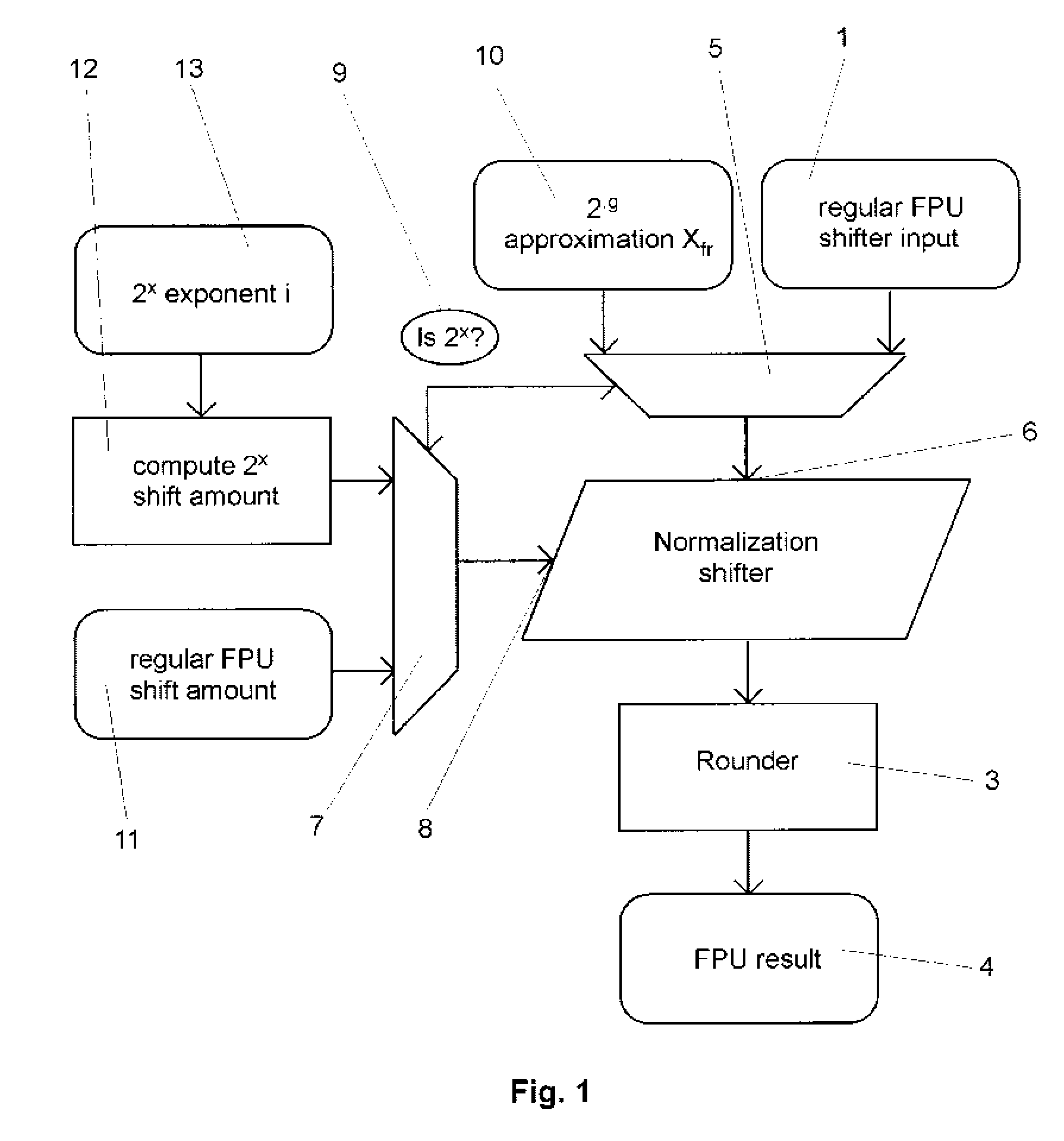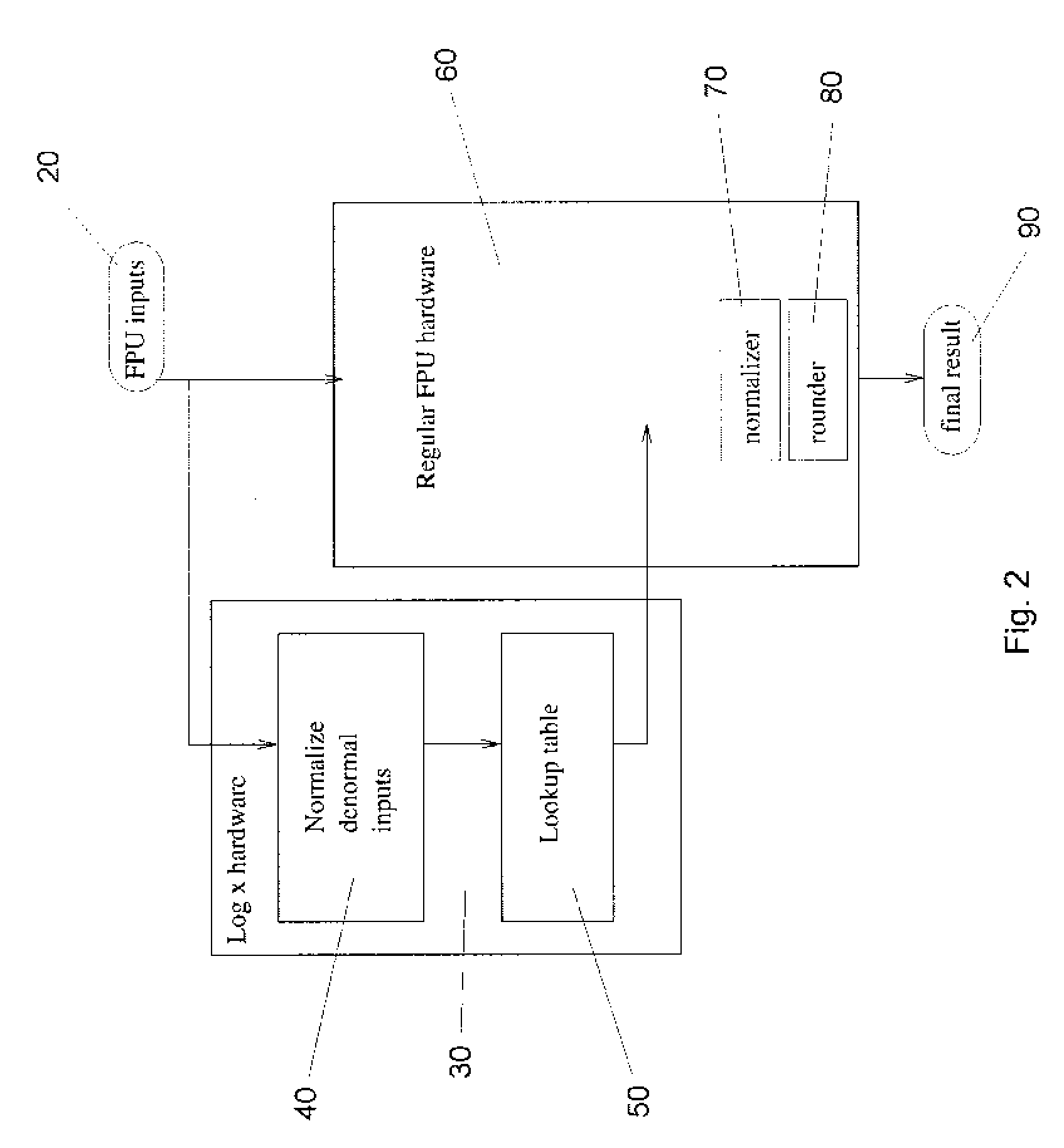Method and Processor for Performing a Floating-Point Instruction Within a Processor
a floating-point instruction and processor technology, applied in computing, computation using denominational number representation, instruments, etc., can solve the problems of interrupting software, affecting the accuracy of computation, and complex computations in the field of denormal numbers
- Summary
- Abstract
- Description
- Claims
- Application Information
AI Technical Summary
Benefits of technology
Problems solved by technology
Method used
Image
Examples
first embodiment
[0051] Initially the invention is described comprising an implementation of a power-of-two approximation instruction that performs the whole computation in hardware without interrupting into software. The described solution for denormal numbers also reuses hardware which is already available for the computation of regular floating-point instructions such like fused-multiply-and-add, FMA. Again, the elimination of the need for an interrupt on denormal inputs or outputs simplifies the control design, in particular for the instruction sequencer. It also improves performance on denormal numbers.
[0052] In order to describe the power-of-two approximation, initially the common way of computing power-of-two approximations without denormal inputs is sketched: The normal floating-point number x is converted into a fixed-point number with n bits in front of the binary point and m bits behind the binary point. This conversion works by shifting the mantissa M of the floating-point number accordi...
second embodiment
[0061] In the following the invention is described comprising an implementation of a log-x-approximation instruction that performs the whole computation within processor hardware without interrupting into software. The described solution for denormal numbers preferably reuses hardware which is already available for the computation of regular floating-point instructions such like fused-multiply-and add, FMA. The elimination of the need for an interrupt at denormal inputs simplifies the control design, in particular for the instruction sequencer. It also improves performance on denormal numbers.
[0062] In order to describe a log-x-approximation initially the common way computing log-x-approximations without denormal inputs is sketched. The number x is given as a floating-point-number according to equation (1). It is assumed that Xs=0 and Xf>0, i.e., x>0, since otherwise the logarithm does not exist. In the following, the mantissa M=Xi.Xf will be used. For the sake of description we als...
PUM
 Login to View More
Login to View More Abstract
Description
Claims
Application Information
 Login to View More
Login to View More - R&D
- Intellectual Property
- Life Sciences
- Materials
- Tech Scout
- Unparalleled Data Quality
- Higher Quality Content
- 60% Fewer Hallucinations
Browse by: Latest US Patents, China's latest patents, Technical Efficacy Thesaurus, Application Domain, Technology Topic, Popular Technical Reports.
© 2025 PatSnap. All rights reserved.Legal|Privacy policy|Modern Slavery Act Transparency Statement|Sitemap|About US| Contact US: help@patsnap.com



